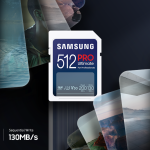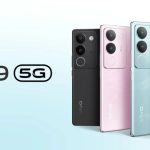As we have explained in our previous post, different digital computers are actual computers; they are programmable electronic machines that accept and process data in digital form. In this blog article, we shall discuss 4 types of digital computers. We can define a digital computer with example more concisely as:
“It is a machine or a device that helps process information.”
OR
“These are the devices through which we provide some input and get the output within seconds. For example, a PC.”
The operations conducted internally in the device use the binary number system since the computer understands only digits, i.e., 0’s and 1’s.
Besides them, there exist Analog and Hybrid computers. However, we usually do not interact with them; instead, we often interact with Digital Computers to accomplish our routine computational tasks.
We must have cleared one thing before discussing the different types of the digital computer, i.e., the point distinguishing them from analog computers. A digital computer gives exact figures in output while the analog one offers approximate results as an output of processing. Moreover, a digital computer consists of three components as a typical computer: input, system, and output units.
There are 4 types of digital computers based on the size and type of the device:
- Supercomputer
- Mainframe computer
- Minicomputer
- Microcomputer
We will explain them one by one.
Supercomputers are the most giant, most expensive, and most powerful computers. These computers have thousands of processors performing trillions of calculations per second, hence the fastest known. Experts from different industries use them for complex calculations. Moreover, their use is in designing and controlling complicated machines such as rockets and fighter planes.
Additionally, we use supercomputers in nuclear research and weather forecasting, requiring many high-speed calculations. IBM and Cray Inc., American supercomputers manufacturers, build the best-known supercomputers. As the Atomic Energy Research Center, many organizations use supercomputers in Pakistan.
 Modern Supercomputer
Modern Supercomputer
Mainframe computers are generally large computers. These are larger, more expensive, and more powerful than minicomputers but less potent than a supercomputer. We mainly use them to store large amounts of data and processing. In addition, it is known for its high level of reliability. These machines are used by an organization that requires crucial applications such as census and customer statistics for extensive calculations requiring a high volume of data processing. Therefore, they are used in large corporations, banks, universities, and scientific laboratories.
A typical mainframe computer can execute about a trillion instructions per second (TIPS). Moreover, it can support thousands of users. Furthermore, a mainframe computer usually fills a large room because they include many types of peripheral devices.
 Mainframe Computer
Mainframe Computer
Some examples of the mainframe are IBM’s zEnterprize EC12, EC196, and HP 16500 Series.
Minicomputers are mid-range computers containing one or more processors. These computers are larger and more expensive than microcomputers. Minicomputers and their peripheral equipment can usually fill a small room.
Minicomputers support multiprocessing. Therefore, these multiple processors share the same computer memory and other required peripheral devices to perform the given task. Consequently, they can support hundreds of users at a time. Moreover, they are faster than a microcomputer but slower than a mainframe. Additionally, they can execute billions of instructions per second (BIPS). These computers can process more data than a microcomputer.
Minicomputers are generally used to process transactions, file handling, and manage databases. Furthermore, they are widely used in industrial process control, scientific research, and small business applications. However, due to the advancement of technology, the difference between the performance of microcomputers and minicomputers is gradually declining. As a result, modern microcomputers are replacing the more expensive minicomputer.
 Minicomputer
Minicomputer
Examples of Minicomputers are IBM System/36, DEC PDP, VAX Series, and HP 3000.
A microcomputer is the smallest and least expensive computer. Its small size results from LSI (Large Scale Integration) and VLSI (Very Large Scale Integration) technologies. Moreover, a modern microcomputer can execute millions of instructions per second (MIPS). Although this is very fast, it is much slower than minicomputers and mainframe computers.
A Microcomputer is not expensive and comes with a microprocessor as its system unit and input/output devices. These computers are generally called personal computers.
The typical microcomputer consists of a keyboard, a mouse, a monitor, and a system unit. We use microcomputers at home for professional use and business applications. In addition, a large variety of software is available on a microcomputer. A large microcomputer can easily fit on a desktop or briefcase like a laptop computer.
 Microcomputer
Microcomputer
Some examples of microcomputers are IBM Thinkpad, Toshiba Satellite series, Dell XPS, HP Envy series, and Apple series.
Also, you may read on Future Technologies in Computer Science.










